Category: International Organisations & reports
IMPACT OF USA’S IMMIGRATION BAN ON SKILLED WORKERS FROM INDIA
28, Apr 2020
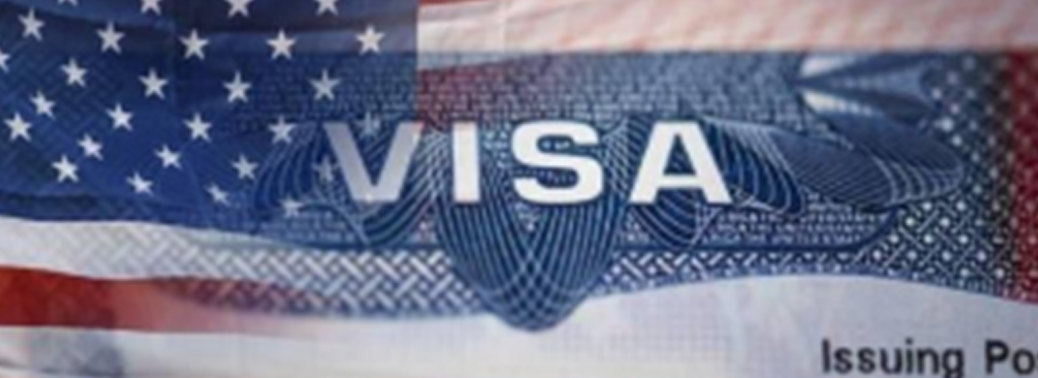
Why in News?
- Recently, the United States President announced that there is a possibility of an executive order to suspend legal immigration into the U.S. for 60 days.
Highlights:
- With the toll of the novel coronavirus on the American population spiralling rapidly, the political pressure has been increasing on the country’s leader to take effective action to bring the pandemic under control.
- It is in this backdrop, that the recent announcement has been made. According to sources, the time limit could be extended depending on conditions on the ground.
What does it mean for Visa Applicants?
- The order is not expected to halt visa processing for many thousands of temporary employees, including a sizeable number of Indian nationals in the H-1B skilled worker category, agricultural workers classified under the H-2A visa and seasonal workers, who fall into the H-2B category.
- With proper exemptions: According to the White House, the policy will also likely carveout exemptions for certain categories of essential workers, including those in health care and who have a critical role to play in fighting the pandemic.
- Immigration via relatives allowed: Exemptions are also being made for those who seek to immigrate via their immediate relatives.
- This includes spouses and minor children of U.S. citizens applying for green cards, or permanent residency.
- Also, those who have already been granted permanent residence will not be impacted bythis executive order.
Other Exemptions:
- Members of the armed forces, those who are immigrating for law enforcement reasons and are already in the pipeline.
- Those on the EB-5 programme, which requires individuals to invest at least $500,000 in U.S. real estate projects, will be considered.
Reason Behind Taking such a Step:
- S. economy in stress: Like many others across the world, the US economy has grounded to a virtual halt in the face of the pandemic.
- An electoral issue: Proposals to restrict immigration served well during the 2016 presidential election, particularly when they were situated in the context of protecting jobsfor U.S. workers.
- To take electoral benefits: The deeper context to the announcement is the fact that the present president is seeking re-election in the upcoming election.
Impact on skilled workers from India:
- On tourism, there is little concern at the present juncture given that India has stopped commercial flights owing to the risks of coronavirus spread.
- Further, in many countries, quarantine procedures apply to international arrivals and this will dissuade many visitors from international travel.
- All are affected: U.S. visa issuance in all countries (not only in India) has ground to a halt.
- This has left many H-1B visa-seekers in the lurch in India, and that could have an economically debilitating impact on the Indian IT and Information Technology Enabled Service (ITeS) sectors.
- However, the visa restrictions are derived more from the overall impact of the pandemic, and not from USA’s immigration ban.
GLOBAL REPORT ON FOOD CRISIS
25, Apr 2020
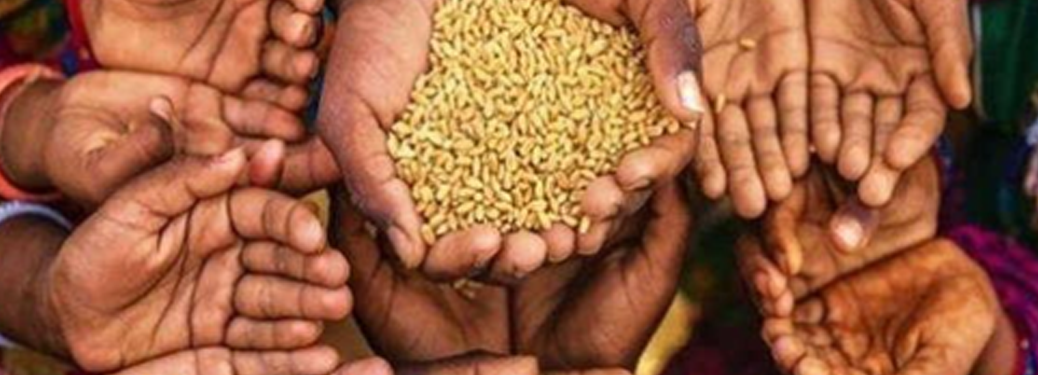
Why in News?
- The 2020 edition of the annual Global Report on Food Crises has been released. The report is produced by the Global Network against Food Crises, an international alliance working to address the root causes of Extreme Hunger.
Highlights:
- The 2020 edition of The Global Report on Food Crises describes the scale of acute hunger in the world.
- It also examines how the COVID-19 pandemic might contribute to their perpetuation or deterioration.
- At the close of 2019, 135 million people across 55 countries and territories experienced acute food insecurity. Acute food insecurity is when a person’s inability to consume adequate food puts their lives or livelihoods in immediate danger.
- Additionally, in 2019, 183 million people were classified in Stressed condition — at the cusp of acute hunger and at risk of slipping into Crisis or worse if faced with a shock or stressor, such as the COVID-19 pandemic.
- Most affected areas: More than half (73 million) of the 135 million people covered by the report live in Africa; 43 million live in the Middle East and Asia; 18.5 million live in Latin America and the Caribbean. The key drivers behind the trends analysed in the report were: conflict, (the key factor that pushed 77 million people into acute food insecurity), weather extremes (34 million people) and economic turbulence (24 million).
Global Network Against Food Crisis:
- The Global Network Against Food Crises was launched by the European Union, FAO and World Food Programme (WFP) during the 2016 World Humanitarian Summit (WHS) to respond to the WHS’s call for new approaches to tackle protracted crises and recurrent disasters, reduce vulnerability, and manage risk, by bridging the divide between development and humanitarian partners.
World Food Programme:
- The World Food Programme (WFP) is the food-assistance branch of the United Nations and the world’s largest humanitarian organization addressing hunger and promoting food security.
- According to the WFP, it provides food assistance to an average of 91.4 million people in 83 countries each year.
- From its headquarters in Rome and from more than 80 country offices around the world, the WFP works to help people who cannot produce or obtain enough food for themselves and their families.
- It is a member of the United Nations Development Group and part of its executive committee.
- The WFP was formally established in 1963 by the FAO and the United Nations General Assembly on a three-year experimental basis.
WORLD BANK’S REPORT – IMPACT OF COVID-19 ON REMITTANCE
24, Apr 2020
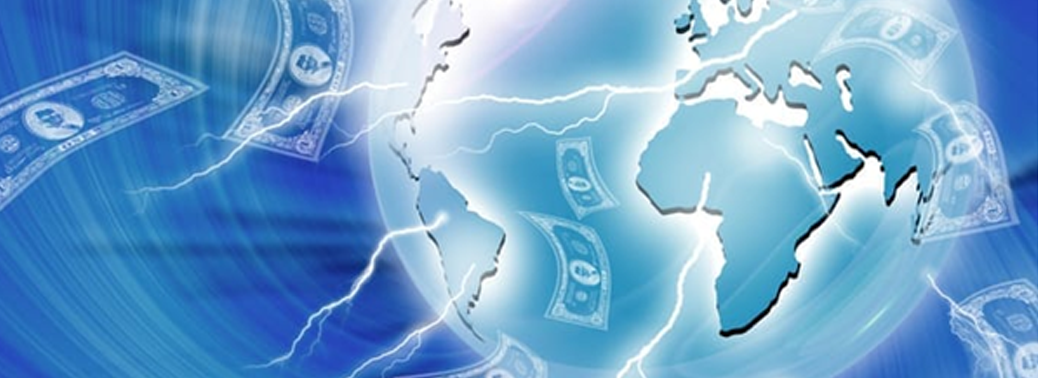
Why in News?
- World Bank has recently released a report on the impact of Covid-19 on migration and remittances.
Key Points:
- Globally remittances are projected to decline by about 20% in 2020.
- According to the report, India’s remittances are projected to fall by about 23% in 2020.
- The migrant workers are vulnerable to loss of employment and wages during an economic crisis in a host country.
- The projected fall is largely due to a fall in the wages and employment of migrant workers due to the recession caused by the Covid-19 pandemic.
- The sharp decline in crude prices will also hurt remittances from oil-producing countries such as Saudi Arabia and the United Arab Emirates.
- This will lead to loss of income for expatriate Indians working in the Gulf and elsewhere across the World.
What is meant by Remittance?
- A remittance is money sent by a person/entity to another party, usually to the one in the other country.
- The sender is typically an immigrant and the recipient a relative back home.
- Remittances represent one of the largest sources of income for people in low-income and developing nations. It often exceeds the amount of direct investment and official development assistance.India is the world’s biggest recipient of remittances. Remittance bolsters India’s foreign exchange reserves and helps fund its Current Account Deficit.
World Bank:
- The Bretton Woods Conference held in 1944, created the International Bank for Reconstruction and Development (IBRD) along with the International Monetary Fund (IMF).
- The IBRD later became the World Bank.
- The World Bank Group is a unique global partnership of five institutions working for sustainable solutions that reduce poverty and build shared prosperity in developing countries.
- It has 189 Member Countries.
- Few important reports released by the World Bank are:
- 1.Ease of Doing Business
- 2.Human Capital Index and
- 3.World Development Report
The Development Institutions of the World Bank are.
- International Bank for Reconstruction and Development (IBRD): Provides loans, credits, and grants.
- International Development Association (IDA): provides low- or no-interest loans to low-income countries.
- International Finance Corporation (IFC): Provides investment, advice, and asset management to companies and governments.
- Multilateral Guarantee Agency (MIGA): Insures lenders and investors against political risk such as war.
- International Centre for the Settlement of Investment Disputes (ICSID): Settles investment-disputes between investors and countries.
OIC WANTS INDIA TO CURB ITS SPREAD OF ISLAMOPHOBIA
20, Apr 2020

Why in News?
- Recently, the Organisation of Islamic Cooperation (OIC) has criticised the Indian government for what it called “growing Islamophobia” in India.
Background Info:
- A religious gathering of muslims (Tablighi Jamaat) was held in Delhi in March. The event was linked to many of the Covid-19 positive cases in India.
- After this most sections of the media, people on social media blamed the Tablighi jamaat and muslims for deliberately spreading the Covid-19 in India.
Stance of OIC:
- OIC asked the government to take steps to protect Muslim minorities who are being “negatively profiled,” facing “discrimination and violence” amidst the Covid-19 crisis.
- It has asked the government to take urgent steps to stop the growing tide of Islamophobia (dislike of or prejudice against Islam or Muslims) in India.
- OIC urged the government to protect the rights of its minority as per its obligations under international Human Rights law.
Earlier Criticism of USCIRF:
- Earlier, the U.S. Commission on International Religious Freedom (USCIRF) has also criticised India of “increased stigmatisation” of its muslim minorities.
- It criticized the government for the reports that Covid-19 patients were religiously segregated at a hospital in Ahmedabad.
About Organisation of Islamic Cooperation:
- The Organisation of Islamic Cooperation (OIC) is the second largest intergovernmental organization after the United Nations with a membership of 57 states.
- It is the collective voice of the Muslim world. It endeavors to safeguard and protect the interests of the Muslim world in the spirit of promoting international peace and harmony among various people of the world.
- It was established upon a decision of the historical summit which took place in Rabat, Kingdom of Morocco on the 25th of September 1969.
- Headquarters: Jeddah, Saudi Arabia.
COVID -19 AND ITS EFFECTS ON MEASLES IMMUNISATION PROGRAM
15, Apr 2020
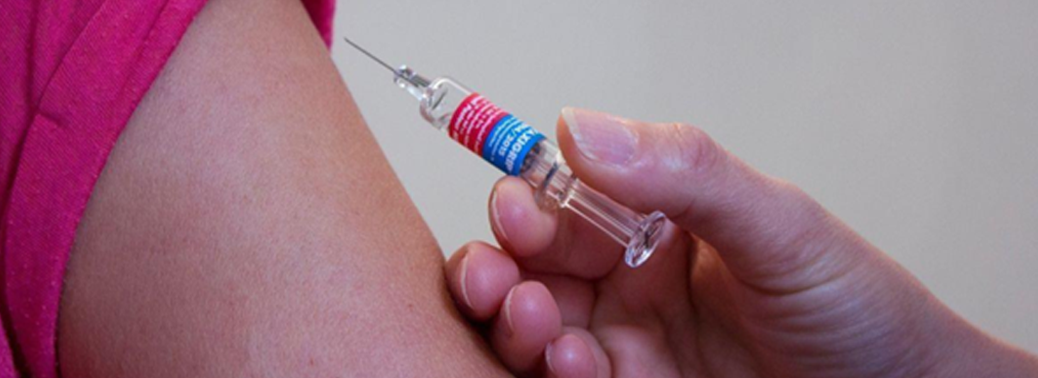
Why in News?
- Recently, the UN noted that around 117 million children worldwide are at risk of contracting measles because dozens of countries are curtailing their vaccination programmes as they battle COVID19.
Highlights:
- Due to the COVID-19 pandemic, measles immunisation campaigns have been delayed in 24 countries and will be cancelled in 13 others where healthcare systems are already inadequate.
- While there is a vaccine for measles, the disease claimed 140,000 lives of mostly infants and babies in 2018.
- The coronavirus pandemic, which has necessitated many prevention measures including strict lockdowns, has kept infants from getting routine immunisation services from some other diseases such as polio, yellow fever and cholera.
Measles:
- Measles is a highly contagious viral disease and despite the availability of a vaccine against it, it remains to be a leading cause of death among young children globally.
- The disease is transmitted via droplets released from the nose, mouth or throat of infected persons.
- The initial symptoms occur 10-12 days after contracting the infection and include high fever, a runny nose, bloodshot eyes and the appearance of white spots on the inside of the Mouth.
- Some of the most serious complications arising out of the disease include blindness, encephalitis (brain swelling), severe Diarrhoea, dehydration and severe respiratory infections such as pneumonia. The disease is still common in parts of Africa and Asia and is more likely among poorly nourished children, especially those who are deficient in vitamin A.
Effects on Mass Immunisation Drives:
- Mass immunisation drives and routine vaccination for children are the key public health strategies against the disease. Therefore, delaying the campaigns affects these strategies, potentially putting the life of thousands of children at risk.
- Countries including Mexico, Bolivia, Lebanon, Nepal and Chile among others have delayed their immunisation campaigns. It notes that children in rich countries are also not totally immune to this disease, since many parents (presumably a part of the antivaccination movement) refuse to get their children vaccinated.
- The WHO released an interim guideline for carrying out immunisation activities during COVID-19, which says if immunisation actvities are negatively impacted during the pandemic, respective countries will need to design strategies for delivering “catch-up” vaccines after the outbreak subsides.
FUNDING OF WHO
13, Apr 2020
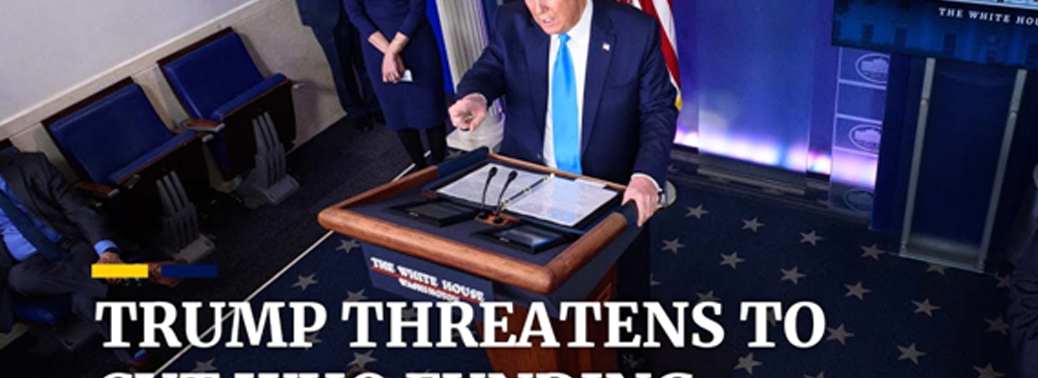
Why in News?
- US President Donald Trump has planned to put a hold on America’s funding to the World Health Organization, accusing it of becoming China-centric during the ongoing coronavirus pandemic.
How it impacts WHO?
- The US is the largest contributor to the WHO. The US share is part of the assessed contributions, which is more like a membership fee, calculated on the basis of a country’s wealth and population, payable on January 1 each year.
- The share of assessed contributions in WHO’s annual budget has declined over the years, to the extent that they now constitute just 24%. The rest is through voluntary contributions not just from member nations but also from private organisations.
- Besides, as of January 31, the US still hasn’t paid the dues for 2019 or for 2020, amounting to almost $200 million. Therefore, the impact would not be much on WHO.
What is its Implication on US?
- If Trump does decide to block the US’ contribution, the WHO can suspend the country’s voting rights and deny access to its services, as per Article 7 of its Constitution.
About WHO:
- WHO came into existence on 7 April, 1948 – a date, which is now celebrated as World Health Day every year. The organisation has more than 7,000 people working in 150 country offices, six regional offices and at its headquarters in Geneva, Switzerland.
How WHO is Governed?
- The World Health Assembly (delegations from all member countries) determines the policies of the organisation.
- The executive board is composed of members technically qualified in health, and gives effect to the decisions and policies of the health assembly.
- Its core function is to direct and coordinate international health work through collaboration.
How is the WHO Funded?
- There are four kinds of contributions that make up funding for the WHO. These are:
- Assessed contributions are the dues countries pay in order to be a member of the Organization. The amount each Member State must pay is calculated relative to the country’s wealth and population.
- Voluntary contributions come from Member States (in addition to their assessed contribution) or from other partners. They can range from flexible to highly earmarked.
- Core voluntary contributions allow less well-funded activities to benefit from a better flow of resources and ease implementation bottlenecks that arise when immediate financing is lacking.
- Pandemic Influenza Preparedness (PIP) Contributions were started in 2011 to improve and strengthen the sharing of influenza viruses with human pandemic potential, and to increase the access of developing countries to vaccines and other pandemic related supplies.
Who is the Largest Contributor?
- The United States is currently the WHO’s biggest contributor, making up 14.67 per cent of total funding by providing $553.1 million.
- The US is followed by the Bill & Melinda Gates Foundation forming 9.76 per cent or $367.7 million.The third biggest contributor is the GAVI Vaccine Alliance at 8.39 per cent, with the UK (7.79 per cent) and Germany (5.68 per cent) coming fourth and fifth respectively.
- The four next biggest donors are international bodies: United Nations Office for the Coordination of Humanitarian Affairs (5.09 per cent), World Bank (3.42 per cent), Rotary International (3.3 per cent), and the European Commission (3.3 per cent).
- India makes up 0.48 per cent of total contributions, and China 0.21 per cent.
How’s Fund Allocated?
- Out of the total funds, $1.2 billion is allotted for the Africa region, $1.02 billion for Eastern Mediterranean region, $963.9 million for the WHO headquarters, followed by South East Asia ($198.7 million), Europe ($200.4 million), Western Pacific ($152.1 million), and Americas (39.2 million) regions respectively. India is part of the South East Asia region.
- The biggest programme area where the money is allocated is polio eradication (26.51 per cent), followed by increasing access to essential health and nutrition services (12.04 per cent), and preventable diseases vaccines (8.89 per cent).
OIL PRICE WAR & IMPLICATIONS
11, Apr 2020
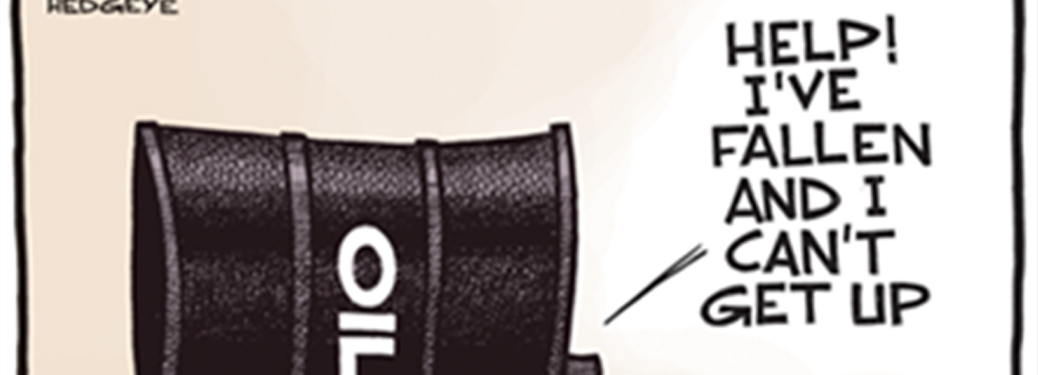
Context:
- OPEC, Russia and other allies have outlined plans to cut their oil output by more than a fifth.The US, Russia and Saudi Arabia, the world’s top three oil producers, all endorsed the agreement to cut production,
COVID-19 and its impact on Oil market:
- Steps to fight the virus have grounded planes, cut vehicle usage and curbed economic activity.
- This led to a plunge in the global fuel demand by around 30 million bpd, or 30% of global supplies.
- Brent oil prices, which hit an 18-year low last month, were trading at half their level at the end of 2019.
- The planned output curbs by OPEC+ amount to 10 million barrels per day (bpd) or 10% of global supplies, with another 5 million bpd expected to come from other nations to help deal with the deepest oil crisis in decades.
- An unprecedented 15 million bpd cut still won’t remove enough crude to stop the world’s storage facilities quickly filling up.
The U.S an Saudi Arabia
- S. President Donald Trump has threatened Saudi Arabia if it did not fix the oil market’s problem of oversupply.
- S.has warned Riyadh that it could face sanctions and tariffs on its oil, if it did not cut its production.
- The U.S. oil industry with higher costs is struggling with low prices.

The G20 Countries:
- The G20 in a reference to the Opec deal, has said “recognised the commitment of some producers to stabilise energy markets”.
- However, G20 energy ministers did not mention any particular production cuts in a statement released after a virtual summit hosted by Saudi Arabia
- Officials from the Organization of the Petroleum Exporting Countries and Russia have said the scale of the crisis required involvement of all producers.
U.S. DILEMMA:
- The United States, whose output has surged to surpass Saudi and Russian production.
- S. officials have already said U.S. output would fall naturally over two years but have not committed to any cuts.
The G20:
- The G20 is an informal group of 19 countries and the European Union, with representatives of the International Monetary Fund and the World Bank.
- The G20 membership comprises a mix of the world’s largest advanced and emerging economies, representing about two-thirds of the world’s population, 85% of global gross domestic product, 80% of global investment and over 75% of global trade.
- The G20 operates as a forum and not as an organisation. Therefore, it does not have any permanent secretariat or management and administrative structure.
- The members of the G20 are Argentina, Australia, Brazil, Canada, China, France, Germany, India, Indonesia, Italy, Japan, Republic of Korea, Mexico, Russia, Saudi Arabia, South Africa, Turkey, the United Kingdom, the United States, and the European Union.
The Organization of the Petroleum Exporting Countries (OPEC):
- The Organization of the Petroleum Exporting Countries (OPEC) is a permanent, intergovernmental organization, created at the Baghdad Conference in 1960, by Iran, Iraq, Kuwait, Saudi Arabia, and Venezuela.
- It aims to manage the supply of oil in an effort to set the price of oil in the world market, in order to avoid fluctuations that might affect the economies of both producing and purchasing countries.
- It is headquartered in Vienna, Austria.
- OPEC membership is open to any country that is a substantial exporter of oil and which shares the ideals of the organization.
- Gabon terminated its membership in January 1995. However, it rejoined the Organization in July 2016.
- Qatar terminated its membership on 1 January 2019.
G20 EXTRAORDINARY ENERGY MINISTERS MEETING
11, Apr 2020
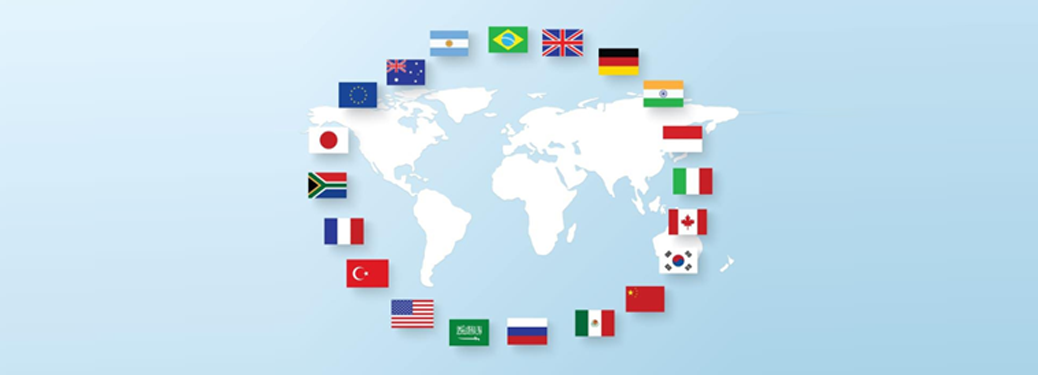
Why in News?
- The G20 Energy Ministers’ meeting will be adopting a Joint Statement, which inter alia, proposes to establish a Task Force to advise the G20 Energy Ministers on the next steps and agreed to remain engaged in the coming days.
Highlights:
- The meeting was called by Saudi Arabia, in its capacity as the G20 Presidency, and chaired by Saudi Arabia Energy Minister.
- The meeting was attended by Energy Ministers of G20 countries, guest countries and heads of international organizations including OPEC, IEA and IEF.
- The G20 Energy Ministers’ focused on ways and means to ensure stable energy markets, which are affected due to demand reduction as result of the COVID-19 pandemic and the ongoing surplus production -related matters.
India’s Input:
- India calls for G20 taking a human-centric approach for overcoming challenging hardships, especially for the vulnerable.
- The Minister highlighted the decision of the government of India, under the aegis of the Ujjwala scheme, to provide 80.3 million poor families free LPG cylinders, as part of a 23 billion dollars relief package.
- India was and will continue to be, the global energy demand centre.
- The Minister highlighted the Government of India’s efforts to fill in Strategic Petroleum Reserves.In terms of the ongoing energy market fluctuations, India has always advocated for a stable oil market, which is reasonable for producers and affordable for consumers.
- India appreciated the collective efforts of OPEC and OPEC-plus countries to balance the supply-side factors which is imperative for long-term sustainability.
- India, however, urged that oil prices should be targeted to affordable levels to allow for a consumption-led demand recovery.
WORLD HEALTH ORGANISATION – FUNDING
09, Apr 2020
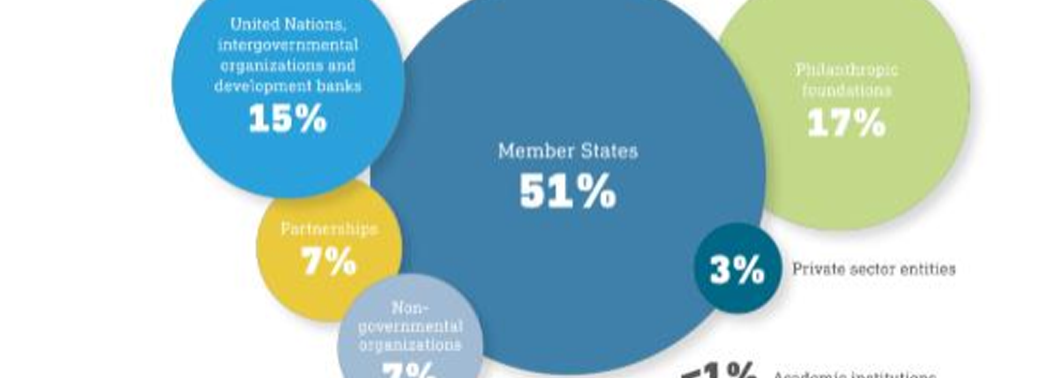
Why in News?
- US President Donald Trump threatened to freeze US funding to the World Health Organization (WHO), saying the international group had failed on the coronavirus pandemic.

Highlights:
- Trump suggested that the WHO had gone along with Beijing’s efforts months ago to under-represent the severity of the outbreak.
- The WHO also serves as a forum for summits and discussions on health issues.
Funding:
- There are four kinds of contributions that make up funding for the WHO.
- Assessed contributions are the dues countries pay in order to be a member of the Organization.
- The amount each Member State must pay is calculated relative to the country’s wealth and population.
- Voluntary contributions come from Member States (in addition to their assessed contribution) or from other partners. They can range from flexible to highly earmarked.
- Core voluntary contributions allow less well-funded activities to benefit from a better flow of resources and ease implementation bottlenecks that arise when immediate financing is lacking.
- Pandemic Influenza Preparedness (PIP) Contributions were started in 2011 to improve and strengthen the sharing of influenza viruses with human pandemic potential, and to increase the access of developing countries to vaccines and other pandemic related supplies.
-
- The United States is currently the WHO’s biggest contributor, making up 14.67 percent of total funding by providing USD 553.1 million. The US is followed by the Bill & Melinda Gates Foundation forming 9.76 percent or USD 367.7 million.
- The third biggest contributor is the GAVI Vaccine Alliance at 8.39 percent, with the UK (7.79 percent) and Germany (5.68 percent) coming fourth and fifth respectively.
- The four next Biggest Donors are International Bodies:
- United Nations Office for the Coordination of Humanitarian Affairs (5.09 percent)
- World Bank (3.42 percent),
- Rotary International (3.3 percent),
- The European Commission (3.3 percent).
- India makes up 0.48 percent of total contributions and China 0.21 percent. The biggest program area where the money is allocated is polio eradication (26.51 percent), followed by increasing access to essential health and nutrition services (12.04 percent), and preventable diseases vaccines (8.89 percent).
WHO:
- The World Health Organization (WHO) is a specialized agency of the United Nations responsible for international public health.
- It is part of the U.N. Sustainable Development Group.
- It is headquartered in Geneva, Switzerland, with six semi-autonomous regional offices and 150 field offices worldwide.
- The WHO’s broad mandate includes advocating for universal healthcare, monitoring public health risks, coordinating responses to health emergencies, and promoting human health and wellbeing.
- It provides technical assistance to countries, sets international health standards and guidelines, and collects data on global health issues through the World Health Survey. Its flagship publication, the World Health Report, provides expert assessments of global health topics and health statistics on all nations.
INDIA MOVED TO WTO ON US TARIFFS
08, Apr 2020
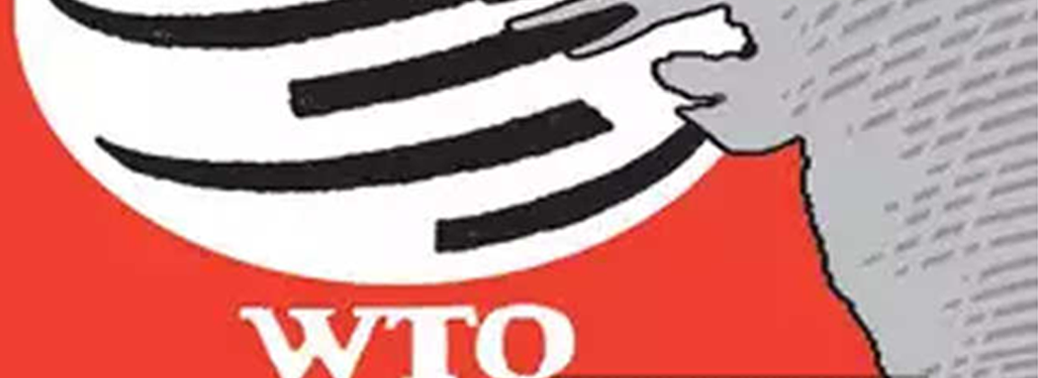
Why in News?
- Under the World Trade Organisation’s (WTO’s) safeguard agreement, India has sought consultations with the US. The consultation has been sought on American authorities’ decision to increase import duties on derivatives of steel and aluminium products.
WTO’s Safeguard Agreement:
- The Agreement on Safeguards (“SG Agreement”) sets forth the rules for application of safeguard measures pursuant to Article XIX of General Agreement on Tariffs and Trade (GATT) 1994.
- Safeguard measures are defined as “emergency” actions with respect to increased imports of particular products, where such imports have caused or threaten to cause serious injury to the importing Member’s domestic industry.
- As per a provision of the Agreement on Safeguards, a WTO member country proposing to apply a safeguard measures shall provide adequate opportunity for prior consultations with those members having a substantial interest as exporters of the product concerned.
- This is with a view to exchanging views on the measure.
India’s Stand:
- India considers this measure of the US to be a safeguard measure within a provision of the General Agreement on Tariffs and Trade 1994, and the Agreement on Safeguards.
- Therefore, India has sought consultations with the US, under the WTO’s safeguard agreement.
- India has sought to exercise its right to consult on the specifics of the measures and its right to determine appropriate trade compensation with the US.
As Per WTO:
- India reserves the right to raise additional issues and make further factual and legal Arguments.
- This should be without prejudice to any other remedies provided for under the understanding of rules and procedures governing the settlement of disputes and the covered agreements during the course of consultations.
- India looks forward to receiving a prompt reply to its request from the US for a mutually convenient date and venue for the consultations.
General Agreement on Tariffs and Trade:
- GATT traces its origins to the 1944 Bretton Woods Conference, which laid the foundations for the post-World War II financial system and established two key institutions, the International Monetary Fund (IMF) and the World Bank.
- GATT signed by 23 countries in Geneva in 1947 came into force on Jan 1, 1948 with the following purposes:
- to phase out the use of Import Quotas
- to reduce tariffs on Merchandise Trade,
- GATT became the only multilateral instrument governing international trade from 1948 until the WTO was established in 1995.
EXTRADITION TREATY BETWEEN INDIA AND BELGIUM
26, Mar 2020

Why in News?
- The Union Cabinet chaired by the Prime Minister, Shri Narendra Modi has approved the signing and ratifying of the Extradition Treaty between the Republic of India and the Kingdom of Belgium.
Highlights:
- Obligation to Extradite:
- Each Party agrees to extradite to the other any person found in its territory, who is accused or convicted of an extraditable offence in the territory of the other Party.
- Extraditable Offences:
- An extraditable offence means an offence punishable under the laws of both the Parties with imprisonment for a period of one year or more severe punishment.
- Where extradition is sought in respect of a convicted person, the duration of the sentence remaining to be served must be at least six months at the time of making the request.
- Offences relating to taxation, or revenue or is one of a fiscal character also fall within the scope of this Treaty.
- Mandatory grounds for Refusal:
- Under the Treaty, extradition shall be refused if:
- The offence involved is a political offence. However, the Treaty specifies certain offences, which will not be considered as political offences.
- The offence for which extradition is requested is a military offence.
- The request for prosecution has been made for the purpose of prosecuting or
- punishing the person on account of his race, sex, religion, nationality or political opinion.
- The prosecution of enforcement of sentence has become time barred.
Extradition of Nationals:
- Extradition of nationals is discretionary.
- The nationality will be determined at the time the offence was committed.
- The Treaty also contains provisions on:
- Assurance in case of Capital punishment (Article 3 (7))
- Central Authorities (Article 6)
- Surrender (Article 11)
- Handing over of Property (Article 18)
- Transit (Article 19)
- Protection of Personal Data (Article 21)
- Expenses incurred in extradition (Article 22)
- Consultations (Article 24)
- Mutual legal assistance relating to extradition (Article 25)
- Entry into Force Amendment and Termination of the Treaty (Article 26)
Benefits:
- The Treaty would provide a legal framework for seeking extradition of terrorists, Economic Offenders, and other criminals from and to Belgium.
- After ratification, the Treaty will enter into force from the date of exchange of instruments of ratification between India and Belgium.
Background:
- The new Extradition Treaty will replace the pre-Independence Extradition Treaty between Great Britain and Belgium of 1901 that was made applicable to India through the exchange of Letters in 1958 and is currently in force between the Republic of India and the Kingdom of Belgium.
- Due to the present procedural requirements and the fact that only limited number of offences are listed under the pre-Independence Treaty, the same has become obsolete in today’s context.
What is Extradition?
- Extradition is the surrender by one State to another of a person desired to be dealt with forcrimes for which he has been accused or convicted and which are justifiable in the courtsof the other States.
- Surrender of a person within the State to another State whether a citizen or an alien is a political act done in pursuance of a treaty or an arrangement ad hoc.
- A Request for Extradition can be initiated against a fugitive criminal, who is formally accused of, charged with, or convicted of an extradition offence.
- ‘Fugitive Criminal’ means a person who is accused or convicted of an extradition offence within the jurisdiction of a foreign State and includes a person who, while in India, conspires, attempts to commit or incites or participates as an accomplice in the commission of an extradition offence in a foreign State.
Legislative Basis for Extradition in India:
- The Extradition Act 1962 provides India’s legislative basis for extradition.
- The Act consolidated the law relating to the extradition of fugitive criminals from India to foreign states.
- It was substantially amended by Act 66 of 1993.
- The Government of India has entered into bilateral Extradition Treaties with 42 countries to bring speed and efficiency to the process of extradition. Besides, India has entered into Extradition Arrangements with 9 more countries. Requests for Extradition on behalf of the Republic of India can only be made by the Ministry of External Affairs, Government of India, which formally submits the request for Extradition to the Requested State through diplomatic channels.
- Such requests are sent under the signature of the Minister of External Affairs.
UN World Happiness Report- 2020
23, Mar 2020

Why in News?
- The United Nations Sustainable Development Solutions Network recently released the World Happiness Report on the occasion of the World Happiness Day (March 20) which was designated by the UN General Assembly in 2012.
About the World Happiness Report:
- The World Happiness Report ranks 156 countries by how happy their citizens perceive themselves to be.
- The rankings are based on polling (Gallup World Poll) which looks at six variables: GDP per capita, social support, healthy life expectancy, freedom, generosity, and absence of corruption.
- The 2020 Report for the first time ranked cities around the world by their subjective well-being and looked into how the social, urban and natural environments combine to affect happiness.
About Sustainable Development Solutions Network:
- The SDSN, launched in 2012, mobilizes global scientific and technological expertise to promote practical problem solving for the Sustainable Development Goals (SDGs) and the Paris Climate Agreement.
- It was established under the auspices of the United Nations Secretary-General.
- The SDSN and the Bertelsmann Stiftung have been publishing the annual SDG Index & Dashboards Global Report since 2016.
Highlights of the Report:
- Top Performers
- Finland is ranked as the world’s happiest nation for the Third Consecutive Year.
- Nordic states dominated the top 10, along with countries such as Switzerland, New Zealand and Austria.
- Luxembourg edged into the 10th spot for the first time this year.
- Worst Performers
- The countries at the bottom are those afflicted by violent conflicts and extreme poverty, with Zimbabwe, South Sudan and Afghanistan classified as the world’s least happy nations.
- India’s Performance
- India previously ranked at 140 dropped to 144.
- Its rank is way lower than its neighbours. Nepal is ranked 92; Pakistan is at 66, Bangladesh at 107 and Sri Lanka at 130.
- India is a new entrant to the bottom-fifteen group.
A FUTURE FOR THE WORLD’S CHILDREN REPORT
25, Feb 2020

Why in News?
- Recently, ‘A Future for the World’s Children’ report was released jointly by the World Health Organization (WHO), UN Children’s Fund (UNICEF) and The Lancet medical journal.
About the Report:
- The report calculates the Flourishing Index and Sustainability Index of 180 countries.
- India secures 131strank on a flourishing index that measures the best chance at survival and well-being for children.
- Further, India ranked 77thon a sustainability index that takes into account per capita carbon emissions and the ability of children in a nation to live healthy lives.
What is Flourishing Index?
- Flourishing is the geometric mean of Surviving and Thriving.
- The parameter of Surviving considers maternal survival, survival in children younger than 5 years old, suicide, access to maternal and child health services, basic hygiene, sanitation, and lack of extreme poverty.
- The parameter of Thriving considers educational achievement, growth and nutrition, reproductive freedom, and protection from violence.
- Norway leads the table for survival, health, education and nutrition rates – followed by the Republic of Korea and the Netherlands.
- The Central African Republic, Chad and Somalia rank at the bottom.
- It also mentioned that the world’s survival depended on children being able to flourish, but no country is doing enough to give them a sustainable future.
- The Index has linked an aspect of harmful marketing of junk food and sugary beverages with the alarming rise in childhood obesity.
- Thus to protect children, it has called for a new global movement driven by and for children.
What is Sustainability Index?
- The Sustainability Index ranks countries on the basis of excess carbon emissions compared with the 2030 target.
- It also states that today’s national conditions for children to survive and thrive must not come at the cost of eroding future global conditions for children’s ability to flourish.
- The leading countries in the Flourishing Index trail behind in the case of the Sustainability Index, with Norway (156th), the Republic of Korea (166th) and the Netherlands (160th).
- Each of the three emits 210 per cent more CO2 per capita than their 2030 target.
- The only countries on track in Flourishing as well as in Sustainability Index are Albania, Armenia, Grenada, Jordan, Moldova, Sri Lanka, Tunisia, Uruguay and Vietnam.
- The lowest emitters are Burundi, Chad and Somalia whereas the U.S, Australia, and Saudi Arabia are among the 10 Worst Emitters.
What are its Recommendations?
- It suggests the elimination of CO2 emissions with the utmost urgency and requests to place children and adolescents at the centre of global efforts to achieve sustainable development.
- New policies and investment in all sectors to work towards child health and rights with the incorporation of children’s voices into policy decisions.
RUSSIA WANTS INDIA TO SIGN FTA WITH EAEU
25, Dec 2019
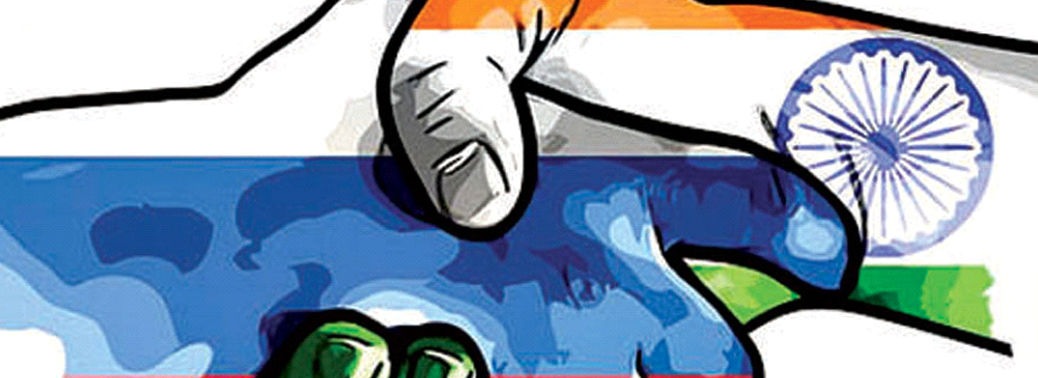
Why in News?
- Russia has recently stated that it is looking forward forward for India to sign Free Trade Agreement (FTA) with Eurasian Economic Union (EAEU).
About Eurasian Economic Union (EAEU)
- The EAEU is an economic union that was established in 2014.
- Member Countries: Russia, Belarus, Kazakhstan, Armenia and Kyrgyzstan.
- It provides for free movement of goods, services, capital and labour, pursues coordinated, harmonized and single policy in the sectors determined by the member countries.
- The EAEU is seen as an attempt by Russia to consolidate Russia’s hegemony over the erstwhile Soviet Union countries. It is also seen as a counter measure of Russia against its isolation by USA and EU.
Benefits gained by India and EAEU, if FTA is signed:
- Integration with Global Value Chains: Recently, India decided not to be part of RCEP agreement and hence there is a need for India to explore other FTAs to get integrated into global value chains. The FTA with EAEU would enable India to leverage its strength in services, pharmaceutical drugs, textiles etc and hence would give a much-needed push to boost India’s exports.
- Boost Trade and Investment: India’s total trade with Eurasian region stands at lower value of around $ 9 billion. It is estimated that an FTA would boost bilateral trade between India and EAEU up to $37-62 billion.
- Counter Chinese Influence in Central Asia:India’s trade volume with Central Asia is less than $ 1 billion as compared to China’s $ 50 bn. This is mainly because China has direct physical proximity as well as established transportation links with Central Asia. The signing of the FTA and establishment of International North South Transport Corridor (INSTC) would enable India to counter the growing Chinese influence in the Central Asia.
- Energy Security: Russia and Central Asian Countries are quite rich in energy sources such as petroleum, natural gas etc. The signing of FTA would enable India to diversify its energy sources and secure its energy security.
How to optimally utilise FTA?
Trade Logistics: India may fail to optimally utilise FTA due to lack of physical proximity and transportation links. Hence, there is a need for speedy completion of proposed International North South Transport Corridor (INSTC).
Visa Issues: India and EAEU should provide long term multiple entry visa for the benefit of businessmen so as to promote investment.
Language Barrier: India and Eurasian countries should nurture exchange of art and culture initiatives. Students exchange programs between the regions can also be enhanced.
WHO INDIA COUNTRY COOPERATION STRATEGY 2019–2023
11, Oct 2019
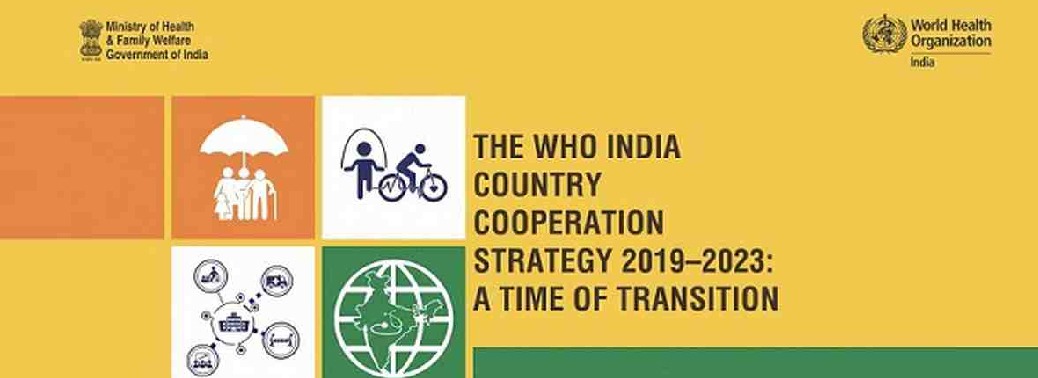
Why in News?
- Union Health Minister has launched the WHO India Country Cooperation Strategy (CCS) 2019–2023.
Highlights:
- The CCS provides a strategic roadmap for WHO to work with the Government of India towards achieving its health sector goals, in improving the health of its population and bringing in transformative changes in the health sector.
- The four areas identified for strategic cooperation of WHO with the country encompass:
- To accelerate progress on UHC
- To promote health and wellness by addressing determinants of health
- To protect the population better against health emergencies
- To enhance India’s global leadership in health
- The India CCS is one of the first that fully aligns itself with the newly adopted WHO 13th General Programme of Work and its ‘triple billion’ targets, the Sustainable Development Goals (SDGs) and WHO South-East Asia Region’s eight Flagship Priorities.
WHO 13th General Programme of Work (GPW13):
- GPW13 was adopted by WHO Member States in May 2018.
- It has three interconnected strategic priorities to ensure healthy lives and well-being for all ages:
- Achieving universal Health Coverage
- Addressing Health Emergencies
- Promoting Healthier Populations
MILITARY MEDICINE FOR SCO MEMBER STATES
09, Sep 2019
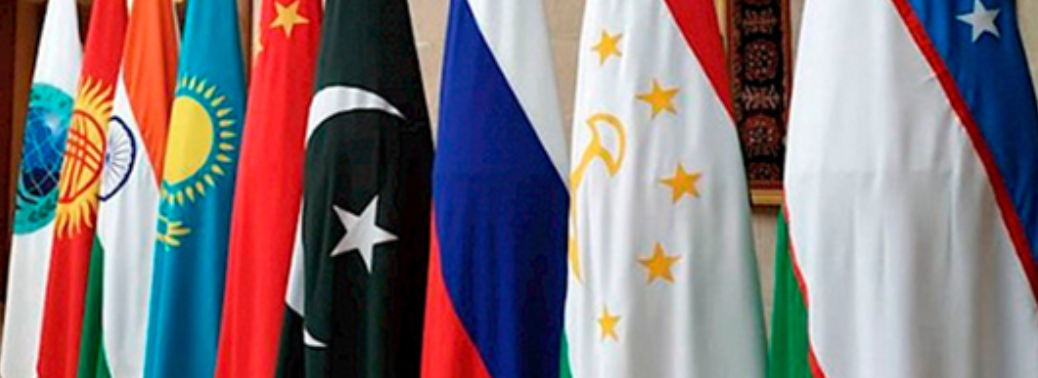
Why in News?
- The first conference of Military Medicine for Shanghai Co-operation Organisation (SCO) Member States will be held in Delhi.
Significance:
- The conference will be the first Military co-operation event hosted by India, under the SCO Defence Co-operation Plan 2019-2020, after it became a SCO Member State in 2017.
- The conference will be conducted by the Indian Armed Forces under the aegis of Headquarters Integrated Defence Staff (HQ IDS), with the aim to share best practices in the field of military medicine, build capacities and overcome common challenges.
- During the conference, the Indian Armed Forces will also demonstrate the Rapid Action Medical Team and organise a visit for the delegates to the Army Research and Referral Hospital.
- Deliberations will take place between military medicine experts of SCO Member States on rendering of combat medical support, humanitarian assistance during disasters and measures to improve patient safety.
- The SCO Member States will be represented by senior military medical practitioners. Dialogue Partners Nepal and Sri Lanka will also be sending their delegations to participate in the Conference.
INDIA ANNOUNCES CONTRIBUTION OF 22MN USD TO GFTAM
04, Sep 2019
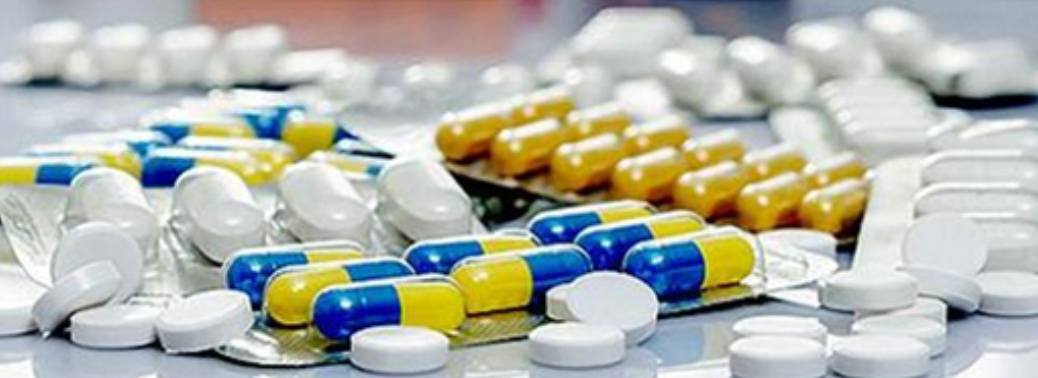
Why in News?
- India has announced a contribution of 22 million US Dollars to the Global Fund for AIDS, TB and Malaria (GFTAM) for the 6th replenishment cycle, an increase of 10% over the amount contributed by us in the 5th cycle.
Global Fund:
- The Global Fund is a partnership designed to accelerate the end of AIDS, tuberculosis and malaria as epidemics.
- As an international organization, the Global Fund mobilizes and invests more than US$4 billion a year to support programs run by local experts in more than 100 countries.
- In partnership with governments, civil society, technical agencies, the private sector and people affected by the diseases, we are challenging barriers and embracing innovation.
- The Global Fund to Fight AIDS, Tuberculosis and Malaria were created in 2002 to raise, manage and invest the world’s money to respond to three of the deadliest infectious diseases the world has ever known.
- The idea for the Global Fund arose from a wellspring of grass-roots political advocacy coming face-to-face with the imperatives of global leadership.
- AIDS, TB and malaria are all preventable and treatable – but solving this problem requires the commitment not only of world leaders and decision-makers but also of those working on the ground to help the men, women and children living with these diseases.
- The idea was discussed at a G8 summit in Okinawa, Japan, in 2000. The real commitment began to coalesce at the African Union summit in April 2001, continued at the United Nations General Assembly Special Session in June of that year.
- This was finally endorsed by the G8 at their summit in Genoa, Italy, on July 2001.
FATF HAS PUT PAKISTAN IN THE ENHANCED EXPEDITED FOLLOW UP LIST
24, Aug 2019
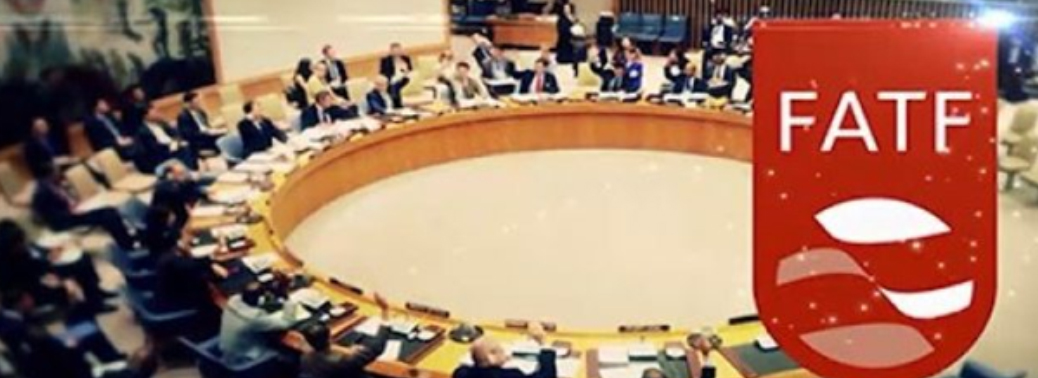
- Context: Financial Action Task Force affiliate Asia Pacific Group (APG) places Pakistan on Blacklist for failing to combat terrorism, money laundering and meeting the required global
- Background: At its meeting in Canberra, where discussions were held for over seven hours spread over two days, the APG found Pakistan non-compliant on 32 of the 40 ‘compliance parameters’ of terror financing and money laundering, the PTI report said. It also said that Pakistan had failed 10 out of the 11 ‘effectiveness paramete
FATF and APG:
- The FATF is an inter-governmental body that is now in its 30th year, working to “set standards and promote effective implementation of legal, regulatory and operational measures for combating money laundering, terrorist financing and other related threats to the integrity of the international financial system”.
- The FATF holds three Plenary meetings in the course of each of its 12-month rotating presidenc
- Pakistan has been under the FATF’s scanner since June 2018, when it was put on the greylist for terror financing and money laundering risks, after an assessment of its financial system and law enforcement mechan
- FATF and its partners such as the Asia Pacific Group (APG) review Pakistan’s processes, systems, and weaknesses on the basis of a standard matrix for anti-money laundering (AML) and combating the financing of terrorism (CFT) regime.
What Pakistan Agreed to Do?
- In June 2018, Pakistan gave a high-level political commitment to work with the FATF and APG to strengthen its AML/CFT regime, and to address its strategic counter-terrorism financing-related deficienci
- Pakistan and the FATF then agreed on the monitoring of 27 indicators under a 10-point action plan, with specific deadlin
- The understanding was that the successful implementation of the action plan, and its physical verification by the APG, would lead the FATF to move Pakistan out of the grey list. However, failure to comply by Pakistan could result in its blacklisting by September 2019.
- It would appear that Pakistan has now failed a key test at the APG. There is a distinct possibility, therefore, that a formal announcement of Pakistan’s blacklisting will be made at the FATF’s Paris Plenary in
Increasing Heat on Pakistan:
- In a statement, the FATF had said in February this year: “Given the limited progress on action plan items due in January 2019, the FATF urges Pakistan to swiftly complete its action plan, particularly those with timelines of May 2019.”
- At a meeting with the Joint Group of the APG in Guangzhou, China, in May, Pakistan had presented its progress on the 27 indicators. The Joint Group had informed Islamabad that its compliance on 18 of the 27 indicators was unsatisfactory, and asked it to do more to demonstrate strict action against eight terrorist groups, and in combating money launderi
India vs Pakistan at FATF:
- India is a voting member of both the FATF and the APG, and co-chair of the Joint Group, where it is represented by the Director General of India’s Financial Intelligence Unit (FIU).
- Pakistan had asked for India’s removal from the group, citing bias and motivated action, but that demand was rejected.
- India was not part of the group that had moved the resolution to greylist Pakistan last year in Paris. The movers were the US, UK, France, and Germany. China did not oppose the move then.
What Happens Now?
- For Pakistan to still be moved out of the greylist would require the votes of at least 15 of the FATF’s 36 voting membe At least three votes would be needed to block a move to blacklist Pakistan.
- The 36 countries include mostly developed Western nations, but also China, Hong Kong (China), Malaysia, and Turkey. Pakistan will likely make a diplomatic push to thwart blacklisting. It claims it has done enough on the action plan, banning Hafiz Saeed’s Jamaat-ud-Dawa and Masood Azhar’s Jaish-e-Mohammed, and taking over their properties.
- Pakistan is in a precarious financial situation. It faces an estimated annual loss of $10 billion if it stays in the greylist; if blacklisted, its already fragile economy will be dealt a powerful blow.
- Pakistan’s $6 billion loan agreement with the International Monetary Fund (IMF) could be threatened. The IMF has asked Pakistan to show commitment against money laundering and terror financing.
ANNUAL PIRACY REPORT (ICC-IMB) 2018
06, Jul 2019
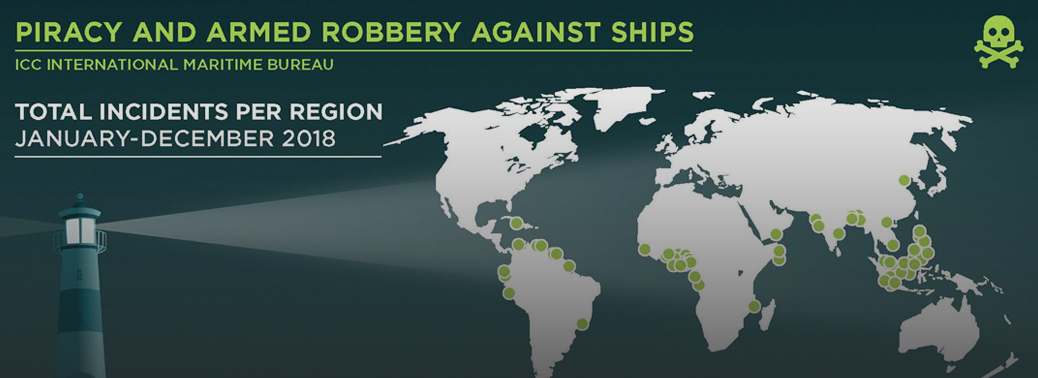
Context– According to the International Maritime Bureau (IMB), West Africa’s Gulf of Guinea became the world’s most pirate-infested sea in 2018.
- Published by ICC International Maritime Bureau (IMB)
- The ICC International Maritime Bureau (IMB) is a specialised division of the International Chamber of Commerce (ICC).
- The IMB is a non-profit making organisation, established in 1981 to act as a focal point in the Fight against all types of maritime crime and malpractice.
Community of Reporting:
- To address this the IMB, along with Oceans Beyond Piracy, have conceptualized ‘Community of Reporting’.
- This endeavour encourages all agencies, governmental and non-governmental, response agencies, commercial operators, etc. to share reports available to them with the IMB – in confidence.
INDIA TO RAISE TERROR, FINANCIAL CRIMES AT G20 SUMMIT
22, Jun 2019

Theme “Human Centered Future Society”
- Issue to be taken up:
-
- Digital economy
- Artificial Intelligence
- Global Health
- Ageing
- Marine Plastic
What is DFFT or Data Free Flow with Trust?
- This is a new principle emerging among the global economies where they wish unrestricted, yet accountable flow of data over a localized data.
- It underlying principles are:
- Rather than tell firms where they can store or process data, policymakers should hold firms accountable for managing data they collect, regardless of where they store or process it.
- Countries should revise the inefficient processes and outdated legal agreements that govern law enforcement requests for access to data stored in another country’s jurisdiction.
- Countries should develop the legal and administrative frameworks (with respective checks and balances) that allow Internet service providers to block data flows that involve the illegal distribution and use of unlicensed content.
- Countries should support and not undermine encryption’s role in securing data flows and digital technologies.
Money-laundering and its prevention:
Terror Funding:
What is FATF?
- The Financial Action Task Force (FATF) is an inter-governmental body
- established in 1989 by the Ministers of its Member jurisdictions.
- The objectives of the FATF are to set standards and promote effective implementation of legal, regulatory and operational measures for combating money laundering, terrorist financing and other related threats to the integrity of the international financial system.
- The FATF currently comprises 36 member jurisdictions and 2 regional organisations, representing most major financial centres in all parts of the globe.
- In June 2018, Pakistan was placed in the ‘grey list’ and given a 27 point action plan.
What does this mean for the Country?
- Pakistan’s banking channel could be adversely affected as it is inevitably linked with the international financial system.
- Foreign financial institutions may carry out enhanced checking of transactions with Pakistan to avoid risk of violations pertaining to money laundering and financing of terrorism.
- Another affected is the sentiment of foreign investors.
Which are the other countries in the grey list?
- The other countries on the list, in alphabetical order, are Ethiopia, Serbia, Sri Lanka, Syria, Trinidad and Tobago, Tunisia and Yemen.
What is Black List?
- Black list makes more stringent restrictions on the countries in the list. This black list comprises Iran and North Korea.
Other Facts:
- The FATF implements UN designations, which do not warrant arrest.
- They ask only to freeze funds, denial of access to weapons and travel embargo
Sri Lanka signs tripartite agreement with India and Japan
29, May 2019
CONTEXT:
- Sri Lanka has signed a tripartite agreement with India and Japan for development of eastern terminal of Colombo port. The Memorandum of Cooperation (MoC) was signed in Colombo today by Sri Lankan ports minister Sagala Ratnayake, Indian high commissioner to Sri Lanka Taranjit Singh Sandhu and a Japanese representative.
- As per the agreement, Sri Lanka Port Authority (SLPA) will hold 51 per cent majority stake in the port development while Japan and India will have combined stake of 49 per cent.
- The three governments have decided to work out details at joint working group meetings and advance their cooperation towards early commencement of work and operation of the terminal.
- The deal is significant as over 70% of India’s transhipment business is handled at Colombo ports.
- One of the terminals is controlled by Chinese company and there was a long-pending proposal to handover the development of Eastern terminal to an Indian company. The deal is part of Memorandum of economic cooperation signed between India and Sri Lanka in 2017.
N. Korea may be preparing for a missile or space launch: report
10, Mar 2019
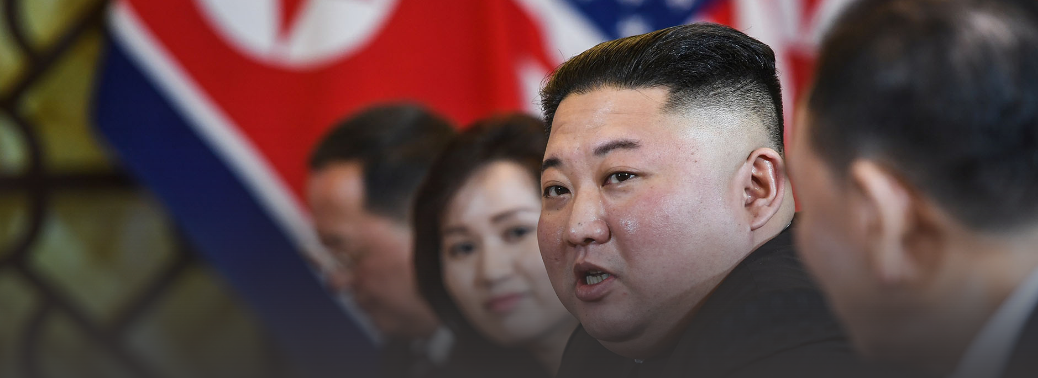
North Korea may be preparing for a missile or space launch, U.S. news outlet NPR has reported, based on satellite image analysis of a key facility near Pyongyang.
The images of Sanumdong, one of the facilities Pyongyang has used to produce intercontinental ballistic missiles, were taken days before U.S. President Donald Trump and North Korean leader Kim Jong-un met in Hanoi for their high-stakes summit, which ended in failure.
Photos published
- The photos by the firm DigitalGlobe show the presence of cars and trucks at the site on February 22, said NPR, which has exclusive access to the imagery.
- It added that rail cars and cranes can also be seen at a yard. When you put all that together, that’s really what it looks like when the North Koreans are in the process of building a rocket.
- The Sanumdong analysis comes days after the specialised website 38 North and the Center for Strategic and International Studies said Pyongyang may have resumed operations at its long-range rocket launch site at Sohae, based on their study of satellite imagery from March 6.
- The development is likely to further compound Washington’s frustration over the lack of progress in its bid to get the North to give up its atomic arsenal, especially after the February 27-28 summit between Mr. Trump and Mr. Kim collapsed without a joint statement.
- Mr. Trump said on Friday that his relationship with Mr. Kim “remains good”, despite the setback in Hanoi.
- U.S. officials have said Washington believes the final, fully verified denuclearisation of North Korea is still possible by the end of Mr. Trump’s first term.
88-Million-Year-Old ISLE and Crater to be Geoparks
16, Oct 2018
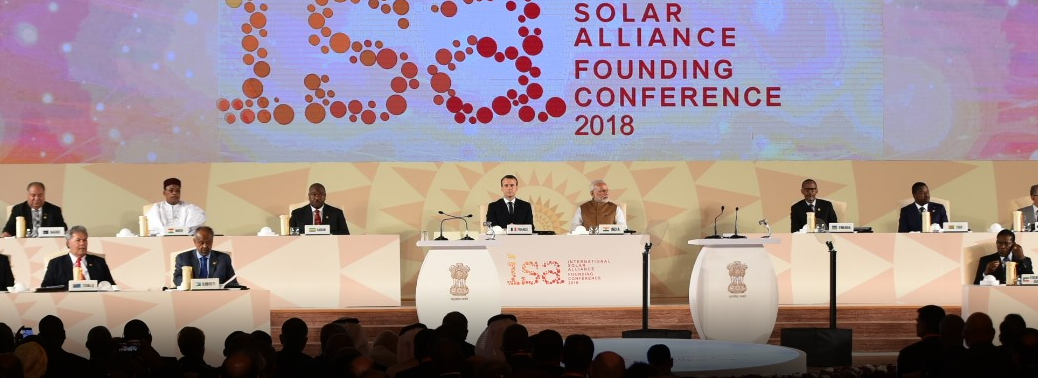
Why in News?
- Geological Survey chooses heritage locations in Maharashtra and Karnataka for UNESCO site status
- In a first, an ancient circular lake created by a meteorite strike in Maharashtra and a hexagonal mosaic of basaltic rocks in an island off Udupi are poised to become global geoparks, under a Geological Survey of India (GSI) plan.
- Lonar Lake in Maharashtra and St. Mary’s Island and Malpe beach in coastal Karnataka are the GSI’s candidates for UNESCO Global Geopark Network status.
Lonar Lake:
- Lonar Lake, Buldana District is a nearly circular crater, suspected to have developed due to impact of a large meteorite on Deccan Basaltic rocks of Cretaceous age.
- A meteorite is a recovered fragment of natural object orbiting in space, that has survived transit through the earth’s atmosphere. Such hypervelocity large meteoritic impacts on earth produces craters.
- Approximately 130 terrestrial craters are currently recognised, ranging in size up to several hundred kilometers in diameter and age upto 2 Ga.
- The Lonar Crater has an average diameter of 1710 m, average rim height of 40 m and depth of 230-245 m. The circular depression bears a saline water lake in its central portion.
St. Mary’s Islands and Maple Beach:
- Columnar Basaltic Lava, Coconut Island (St. Mary’s Islands), Udupi District, Karnataka displays majestic array of multi-faced columns developed in the basalts of Deccan Trap.
- The columnar basaltic lava found in these Islands, which is very well developed in the basalts of Deccan Traps, exhibit an imposing range of hexagonal shaped or multi-faced (polygonal) columns split into a horizontal mosaic. In geological terms these are called “columnar joints”.
- The lava rocks form regular five, six or seven-sided pillars, called “laminar lava”, and are found in varying heights in all the islands; the tallest of the columns is about 6 m (20 ft). These marvellous structures, called Columnar Joints in geological parlance are nature’s exquisite handiwork. The geometrical form of the rock mosaic resembles the work of an expert sculptor.
- The Deccan Trap, evolved due to vast outpouring of hot molten basaltic lava in the western part of India during Cretaceous Eocene time (about 60 million years ago) are now present as flat-topped hills and step like terraces.
- Mary’s Island are a tiny group of four picturesque islands situated off the west coast of India near Malpe. Malpe is a natural port The major industry in Malpe is fisheries. Malpe is also known as the natural port and the largest port in Karnataka.
- Tile-manufacturing is another thriving industry in Malpe, as is the coconut industry. It is also known for the TEBMA ship building company.
UNESCO Global Geoparks:
- UNESCO Global Geoparks are single, unified geographical areas where sites and landscapes of international geological significance are managed with a holistic concept of protection, education and sustainable development.
- A UNESCO Global Geopark uses its geological heritage, in connection with all other aspects of the area’s natural and cultural heritage, to enhance awareness and understanding of key issues facing society, such as using our earth’s resources sustainably, mitigating the effects of climate change and reducing natural disasters-related risks. By raising awareness of the importance of the area’s geological heritage in history and society today, UNESCO Global Geoparks give local people a sense of pride in their region and strengthen their identification with the area.
- The creation of innovative local enterprises, new jobs and high-quality training courses is stimulated as new sources of revenue are generated through geotourism, while the geological resources of the area are protected.
The four features that are fundamental to a UNESCO Global Geopark are:
Geological heritage of International value
- In order to become a UNESCO Global Geopark, the area must have geological heritage of international value. This is assessed by scientific professionals, as part of the “UNESCO Global Geopark Evaluation Team”. Based on the international peer-reviewed, published research conducted on the geological sites within the area, the scientific professionals make a globally comparative assessment to determine whether the geological sites constitute international value.
Management
- UNESCO Global Geoparks are managed by a body having legal existence recognized under national legislation.
- This management body should be appropriately equipped to address the entire area and should include all relevant local and regional actors and authorities.
- UNESCO Global Geoparks require a management plan, agreed upon by all the partners, that provides for the social and economic needs of the local populations, protects the landscape in which they live and conserves their cultural identity. This plan must be comprehensive, incorporating the governance, development, communication, protection, infrastructure, finances, and partnerships of the UNESCO Global Geopark.
Visibility
- UNESCO Global Geoparks promote sustainable local economic development mainly through geotourism. In order to stimulate the geotourism in the area, it is crucial that a UNESCO Global Geopark has visibility. Visitors as well as local people need to be able to find relevant information on the UNESCO Global Geopark. As such, UNESCO Global Geoparks need to provide information via a dedicated website, leaflets, and detailed map of the area that connects the area’s geological and other sites.
- A UNESCO Global Geopark should also have a corporate identity.
Networking
- A UNESCO Global Geopark is not only about cooperation with the local people living in the UNESCO Global Geopark area, but also about cooperating with other UNESCO Global Geoparks through the Global Geoparks Network (GGN), and regional networks for UNESCO Global Geoparks, in order to learn from each other and, as a network, improve the quality of the label UNESCO Global Geopark. Working together with international partners is the main reason for UNESCO Global Geoparks to be a member of an international network such as the GGN. Membership of the GGN is obligatory for UNESCO Global Geoparks. By working together across borders, UNESCO Global Geoparks contribute to increasing understanding among different communities and as such help peace-building processes.
News Species of Humming bird Identified in Ecuador
14, Oct 2018

Why in News?
- A team of ornithologists in Ecuador has identified a new species of hummingbird: a lovely blue-green creature that lives in a cold, barren highland area and is in danger of extinction.
About the bird:
- The bird is about 11 cm (four inches) long and has a stunning, deep blue neck, a white breast with a black stripe and greenish-blue head and body feathers.
- It has been given the name Oreotrochilus cyanolaemus, or blue-throated star. The discovery was announced in a journal called The Auk: Ornithological Advances.
- The bird lives at an altitude of 3,000 to 3,700 meters (10,000 to 12,000 feet) in an area near the Pacific coast that straddles the provinces of Loja and El Oro.
- Researchers estimate there are only 300 of these birds and say its habitat is shrinking dramatically. Mining in the area also threatens it.
- These birds are very well documented so the discovery of a new one is extremely rare. This is the first such find in 30 years.
- Hummingbirds are distinguished by their colors and the shape of their beak. “Each one represents the colors of the jewels that can see in the world: diamond, ruby, amethyst,” said Sornoza, who has studied birds for 30 years and is so crazy about them he imitates bird song.
- Hummingbirds are tough little creatures, — their hearts beat 1,600 times per minute by day but that goes down to 200 at night to help them survive cold temperatures. The new species has a slightly curved beak that helps it get at the flowers of the chuquiragua, a plant that Ecuadoran highlanders use to brew tea also known as “flower of the Andes” or “flower of true love”.
- It can eat up to two times its weight in nectar.
- The hill star humming birds occur in the most rugged, isolated, and inaccessible parts of the Andes, where they roost in caves, forage on the ground, and spend half their lives in hypothermic torpor, so the discovery of a new species in this group is incredibly exciting.
- The distributional range of the blue-throated hill star, as currently known, is confined to small ridges not surpassing 3,700 m, both on east- and west-facing slopes and upper ridges of the west Andean cordillera.






